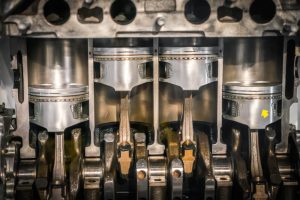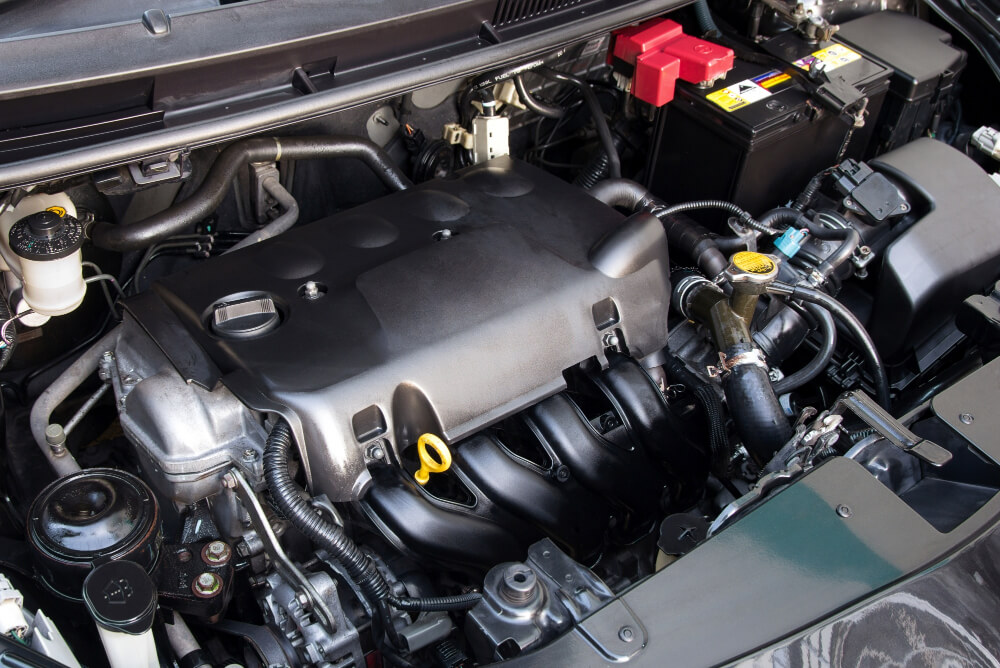How a Car Engine Works: Detailed Explanation
If you’ve ever wondered how a car engine works, you’re not alone. It’s actually a pretty complicated system. But today we’re going to break down exactly what happens when you turn the key in your ignition and hear that beautiful sound of your car coming to life.
First things first: How does your car start? The answer is simple, it’s all thanks to something called “combustion.” The combustion process converts fuel into energy in the form of heat and pressure. These two elements combine to spin a turbine, which is connected to the crankshaft in your engine. This causes your pistons which are connected directly to the crankshaft to move up and down, causing the wheels of your car to turn.
The process continues until it reaches its end goal: putting power on wheels so that you can drive wherever you want.
When you turn on your car, the engine starts. The engine is the main source of power for your vehicle. It is powered by petrol or diesel fuel, in small amounts. The fuel is sent through various components within the engine, which help it produce energy and move the car forward.

Fuel, air and spark
Your car’s engine is a complex machine, but it’s really not that hard to understand. The first thing you need to know about the engine is that it needs three things to work: fuel, air, and spark.
The first step in starting your car is to put fuel into the tank. The fuel gets sent through the system so that it can be burned by the spark plug when you turn on your engine. When you press on the gas pedal, this causes more fuel to be pushed into the engine so that it can burn more efficiently and effectively. But you need air for combustion.
To pull air into your engine, there are several different processes that happen at once. First, there are holes in your carburetor which is part of your intake manifold that allow air to come in from outside of your car. This air then travels through your intake manifold and enters into an area called the cylinder head also known as an exhaust manifold. From here, it travels through a passage called an exhaust port on its way out of your car’s exhaust system.
Now that we’ve got our gas and air ready for combustion, all we need is some heat energy to make everything happen. That comes from ignition plugs located inside each cylinder head where they provide the spark that causes the gas to ignite.
When this happens, it causes an explosion in your engine which pushes a piston down and turns a crankshaft which is connected to the wheels of your car. The exhaust system then pulls the remaining exhaust gases out of your engine through ports located between each cylinder head and into one large pipe called an exhaust manifold.
The four-stroke cycle
The four-stroke cycle is the process by which an internal combustion engine generates power. It’s a little complicated, but we’ll break it down for you.
In the first stroke, or intake stroke, the piston moves down in the cylinder and draws in a mixture of fuel and air. This creates a partial vacuum that pulls in more air through an intake valve. The fuel-air mixture ignites at the top of this stroke, creating a controlled explosion known as combustion. This expansion of gases drives the piston back to its original position while pushing out exhaust gases through an exhaust valve.
During the second stroke, also called compression or power stroke, the piston moves up in the cylinder compressing a fresh charge of air-fuel mixture. This increases its density and pressure until it reaches enough force to ignite again at some point during this cycle. The resulting explosion pushes down on the piston so hard that it moves against its own weight into a third stroke: exhaust recovery.
In this final stroke, called exhaust recovery or reverse power stroke, fresh air is sucked into the chamber through an intake valve while burned gases are pushed out through an exhaust valve at low speed

Horsepower, torque, and cylinders
Horsepower, torque, and cylinders are three of the most important components of a car engine.
Horsepower (HP) is the measure of how much work an engine can perform. It’s measured in units called horsepower, named after James Watt, who was the first person to accurately measure this value.
Torque is another measurement that tells you how much force an engine can produce. The higher the torque rating, the more powerful your engine will be in terms of acceleration and handling.
Horsepower and torque are two things that you hear a lot when talking about engines. The horsepower of an engine is how much force it can put out, while torque is how much force it can apply to something moving.
Cylinders are the part of an engine where combustion takes place. They’re what makes your vehicle move. There are two types: inline or V-shaped. An inline cylinder has no angle; it’s just straight across like a line drawn on paper. A V-shaped cylinder looks like “V” on its side—it has two angles instead of one.
Induction – naturally aspirated vs. forced induction
Induction is the process of getting air into the engine. The air is drawn in through an intake manifold, which is made up of a series of tubes and runners. As the engine runs, the pistons move up and down, forcing air into the intake manifold. This process creates a vacuum, which sucks in more air from outside the engine.
Naturally aspirated induction is what most cars use. It’s where the engine draws in air with its engine instead of using a separate source to force it into the engine. This type of induction system is used in most petrol engines and is also used by some diesels. The main advantage of naturally aspirated induction is that it is efficient at creating power because there aren’t many restrictions on how much air can flow into the engine.
Forced induction is a different kind of induction that uses a compressor or turbine to compress air before it enters an engine’s cylinders. This makes more power by forcing more air into each cylinder at once, which allows for more fuel to be burned for each explosion within that cylinder. Forced induction systems are typically found in turbocharged engines, but superchargers are also sometimes used as well.
The process of induction continues until all of the cylinders are full of air. The next step is compression.
Read>>>>Top 10 Best Cars to Buy
Summary
- The combustion engine is a machine.
- An engine has five main parts: the block, the piston, the crankshaft, the spark plug, and the valves.
- There are two main types of combustion engines: gasoline and diesel.
- There are four basic steps in the combustion process that occurs within an engine: intake, compression, power, and exhaust.
- The block of an engine is like a large casting
- The pistons are short cylindrical pieces that move up and down inside the cylinders.
- The crankshaft is connected to the bottom of each piston by a connecting rod
- Spark plugs ignite gas vapors in gasoline powered engines; glow plugs do this in diesel engines.
Read>>>Nissan X-Trail Features And Price



